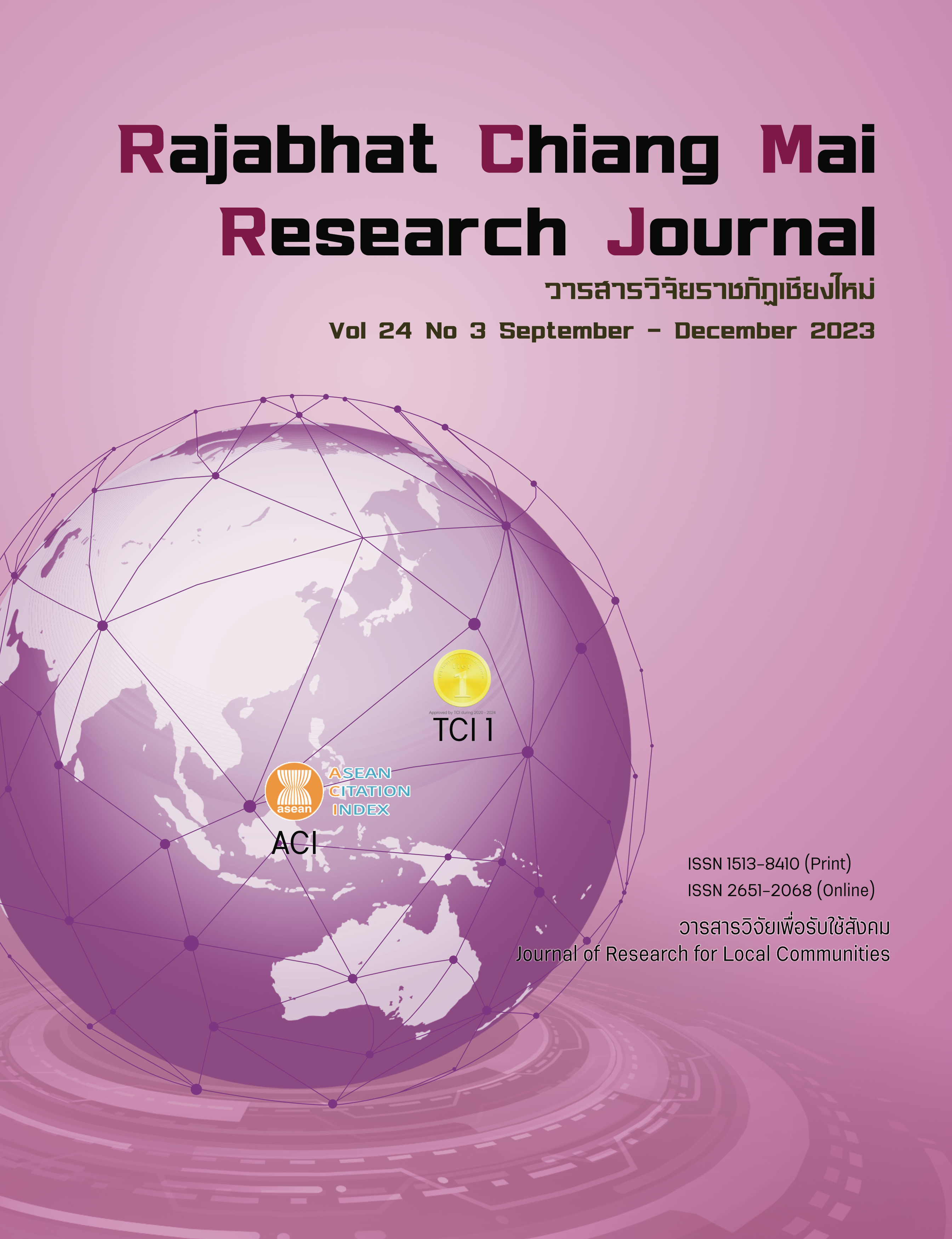Hotila: A Natural Consumption Alternative to MSG
DOI:
https://doi.org/10.57260/rcmrj.2023.262712Keywords:
Hotila, Maehongson, Sgaw karen plant, Food substitute, MSGAbstract
This article is a mixed-method integration of survey and Participatory Action Research (PAR) conducted with local communities regarding a fern type commonly known as “Hotila” in Sgaw Karen or “Phaktue” in Tai Yai. Hotila is a palatable and nutrient-dense meal and is used as a healthy condiment to flavour various local cuisines with a sweet and mellow taste. Previously, research on and knowledge about it were sparse. The objectives of this study were thus to gather fundamental information about Hotila through in-depth surveys and interviews, to promote the conservation, rehabilitation, and breeding of a native species of Hotila through observation, interviews, and simple experiments, and to compare the satisfaction levels of Hotila consumption with that of Monosodium glutamate (MSG) in 17 communities in Mueang and Khunyuam Districts of Maehongson Province using Hedonic Scale of nine-satisfaction level questionnaires on 12 issues—pigment, smell, taste, texture, pricing, and packaging of Hotila and those of MSG with 319 randomly selected native samples. Results revealed: 1) 13 facts about Hotila, 2) Hotila is not typically grown in communities for at least two factors: unfavourable conditions in the soil, water, humidity, and temperature; and that communities lack the necessary knowledge on how and when to effectively collect and to successfully reproduce the Hotila species, and 3) MSG was inferior to Hotila in all 12 aspects. The findings are valuable to the research communities because they provide firsthand information about Hotila, a food substitute for MSG to encourage good health, especially for people who are health-conscious and allergic to MSG.
Downloads
References
Ajinomoto North America. (2023). Eat Well, Live Well: Ajinomoto Monosodium Glutamate (MSG) Nutritional Information. Retrieved from https://ingredi.com
Chaiprateep, E. (2015). MSG and Neurodegenerative Diseases. KKU Journal for Public Health Research, 8(3), 1-3 https://he01.tci-thaijo.org/index.php/kkujphr/article/view/120980 (In Thai)
Charoenchit, P. (2022). Phak Kut: A traditional tasty menu. Folk Technology. Retrieved from https://www.technologychaoban.com/agricultural-technology/article_ 146330 (In Thai)
Churueangsuk, N. (2012). A Comment on a Flavoring Plant...Really?. Retrieved from https://www.gotoknow.org/posts/481189 (In Thai)
Ministry of Natural Resources and Environment. (2016). Folk Botany Project of Ethnic Groups in the Upper North, Omkoi District, Chiang Mai. BGO Plant Databases, the Botanical Garden Organization: Medicinal Plants Database. Retrieved from http://www.qsbg.org/Database/plantdb/mdp/medicinal-specimen.asp?id= 843
National science and technology development agency: NSTDA Library. (2011). Science projects data base. Retrieved from http://elib.ipst.ac.th/elib/cgibin (In Thai)
North Public News Agency. (2018). From Hotila to Local Wisdom of a Flavoring Plant for Happy and Healthy Consumption. Retrieved from https://www.northpublicnews.com (In Thai)
Pangtong height service and development centre under the royal initiatives. (2021). 18 fern species in Maehongson. Thailand: Maehongson.
Royal Project Foundation. (2012). Retrieved from https://www.royalprojectthailand.com/node/1588 (In Thai)
Somjai, S. (2021). Personal conversation. Maehongson: Khunyuam District’s Office for Agriculture.
Srilai, K. (2009). Participatory research to improve the quality of seasonings from Hoatee in the community. Research Information Repository: Highland Research and Development Institute (HRDI).
Srilai, K. (2010). The Study on Active Chemical Composition, Nutrition Fact and Pharmaceutical Benefit of High Land Plants. Research Information Repository: Highland Research and Development Institute (HRDI).
Srilai, K. (2021). “Hoti”: A flavouring plant. Highland Research and Development Institute (HRDI). Retrieved from https://www.hrdi.or.th/Articles/Detail/1457 (In Thai)
Stevenson, D. (2000). Monosodium glutamate and Asthma. Retrieved from https://academic.oup.com/jn/article/130/4/1067S/4686674?login=true
Suda, C., & Duangwongsa, J. (2020). Use of Asplenium unilaterale lam. Leaves instead of MSG in the production of fermented fish seasoning to create a product with good physical characteristics and taste supporting the demand of consumers. RajabhatMahaSarakham University Journal, 14(3), 67-76. https://so05.tci-thaijo.org/index.php/rmuj/issue/view/16836 (In Thai)
Thaifern. (2022). Asplenium. Retrieved from http://www.thaifern.com/Aspleniaceae/obscurum.htm (In Thai)
Thai Health Promotion Foundation. (2019). Warning: Eating too much MSG increases risk illness. Retrieved from https://www.thaihealth.or.th/?p=292009 (In Thai)
Thai Kasetsart. (2012). Fern: Breeding and planting. Retrieved from https://www.thaikasetsart.com/ (In Thai)
Wachiramon, W. (2012). Eating too much MSG causes hair fall, doesn’t it? Retrieved from https://www.rama.mahidol.ac.th/atrama/issue004/believe-it-or-not (In Thai)
Downloads
Published
How to Cite
Issue
Section
License
Copyright (c) 2023 Rajabhat Chiang Mai Research Journal

This work is licensed under a Creative Commons Attribution-NonCommercial-NoDerivatives 4.0 International License.
1. Articles, information, content, images, etc published in the “Community and Social Development Journal” are copyrighted by the Community and Social Development Journal, Chiang Mai Rajabhat University. In order to properly distribute the articles through print and electronic media, the authors still hold the copyright for the published articles under the Creative Commons Attribution (CC BY) license, which allows the re-distribution of the articles in other sources. References must be made to the articles in the journal. The authors are responsible for requesting permission to reproduce copyrighted content from other sources.
2. The content of the articles appearing in the journal is the direct responsibility of the article authors. The editorial board of the journal does not necessarily agree with or share any responsibility.














